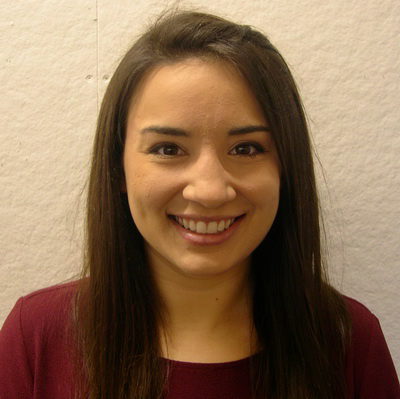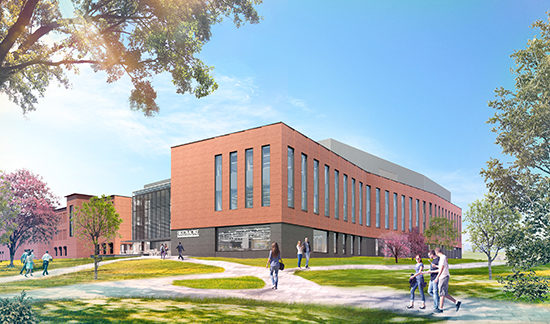
As part of an exploration for the renovation and new addition to the Skidmore College Center for Integrated Sciences, I had the opportunity to investigate the brick articulation across its long facades and challenge early assumptions about the exterior design. I used this occasion to flex my Grasshopper muscles and explore the potential of parametric tools to transform standard brick construction.
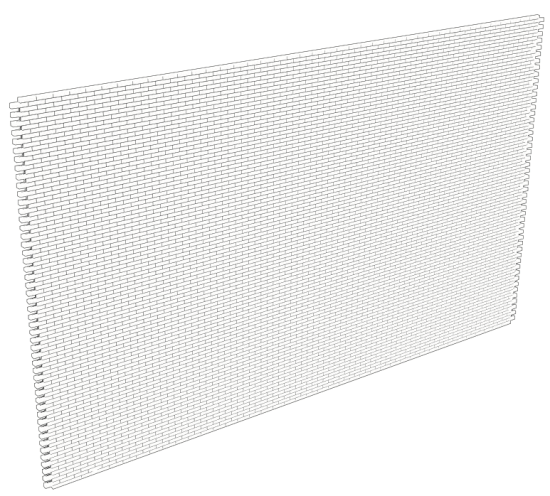
My focus for this study was on the east and north facades of the new addition. The addition to existing buildings, Dana and Old Dana, conceptually wraps around the existing structures to create a tight wrapper.
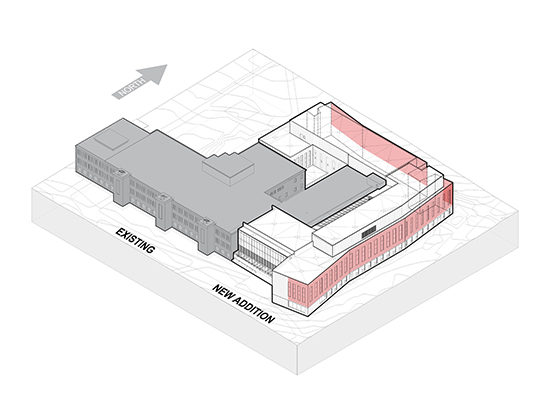
The regular window articulation along the east and north facades produces a visual rhythm, and soft corners break down the long expanses at each face. The soft corners provide creative moments of departure that allows the brick to change. What happens if the brick faces always stay parallel to each other? What if every other brick rotates to match the angles of adjacent faces? What if certain rows of brick coursing are pushed or pulled out of plane to highlight the edges? It was important to consider how the brick articulation further addressed the large scale of the east and north facades, and how effectively each scheme captured light and shadow. Additionally, each scheme would be cross-examined against our current plan for control joints and weighed against those real-world implications.
Designing the process
Using Grasshopper as a tool for design was especially important for this exploration in order understand the effects of each scheme across the entire façade – each face of the east façade has at least 20,000 bricks! The iterative nature of the design process prompted me to use methods that would allow me to quickly isolate and manipulate a number of variables related to the brick construction. My early Grasshopper definitions acted as a springboard for future design iterations. As I developed new schemes, I was able to craft increasingly complex codes and carefully tweak the results.
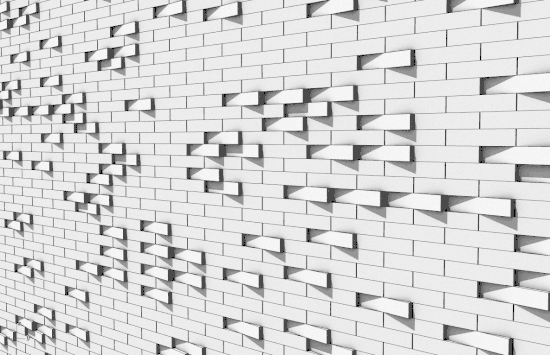
Over the course of the study, I pulled apart brick construction by controlling individual bricks, specific rows of brick coursing, angles of rotation, module sizes and spacing. In one scheme, I incorporated an element of random-selection that produced interesting results.
Refining results
After a few rounds of review, the design team chose a subtle route. By pushing and pulling rows of brick coursing at the soft corners and tapering them to be flush with the face of the exterior wall, we could effectively highlight this feature without generating too much visual noise. The question remained, however, how far should these tapered rows extend? Enter the number slider component:
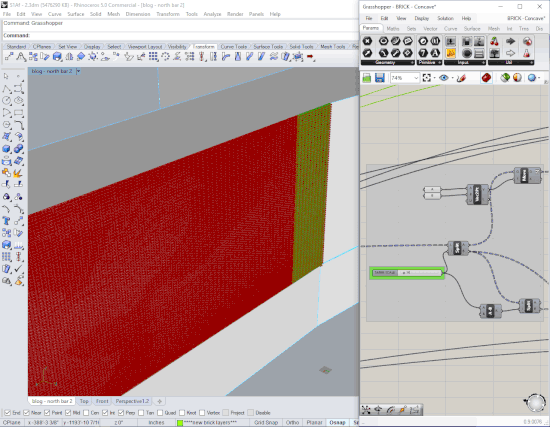
Without this beautiful tool, I would have spent many sleepless nights generating multiple models to provide the same information. Incorporating the ability to revise and refine design moves is one of the greatest advantages to using digital parametric tools during the creative process.
Next steps
In an increasingly digital world, the architecture industry reveres analogue methods and materials that uphold the historic authenticity of our profession – leading to a slow acceptance at large for the digitization of design processes and ideologies. I firmly believe that parametric design thinking is not absent from familiar analogue design processes, and “authentic” construction methods, like brick masonry, are not necessarily nonparametric. Dissolving the barrier between these two schools of thought allows us to expand applications for parametric design and thoughtfully challenge conventional use of materials. The Skidmore College Center for Integrated Sciences was an excellent case study for this type of mindset. The project offered the appropriate scale and programmatic opportunity to reshape traditional brick construction.
As the project continues, my developments for the Skidmore CIS will surely evolve. The cyclical design process lends itself to an open-source attitude, where the give-and-take of information refines our own approaches and broadens the reach of great ideas. Fortunately, the Grasshopper community capitalizes on sharing tools and insight, maximizing parametric design’s potential to create equitable, creative and innovative spaces.

